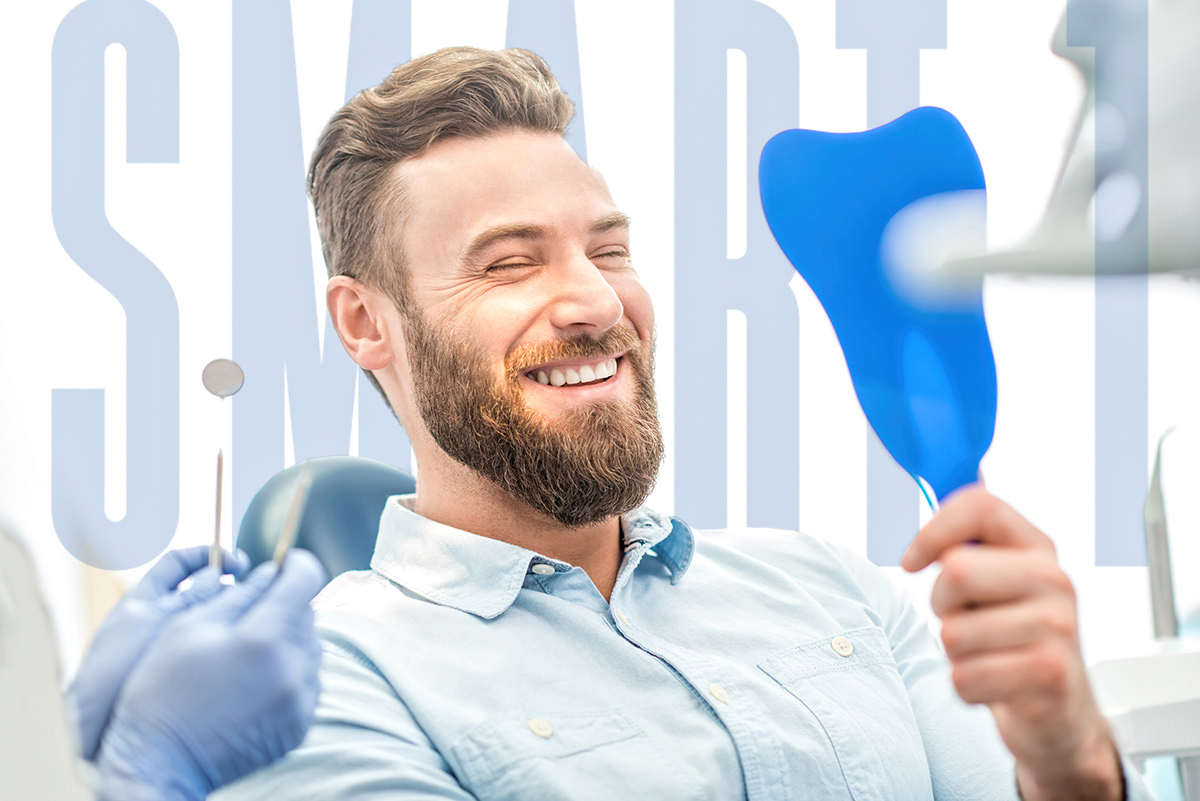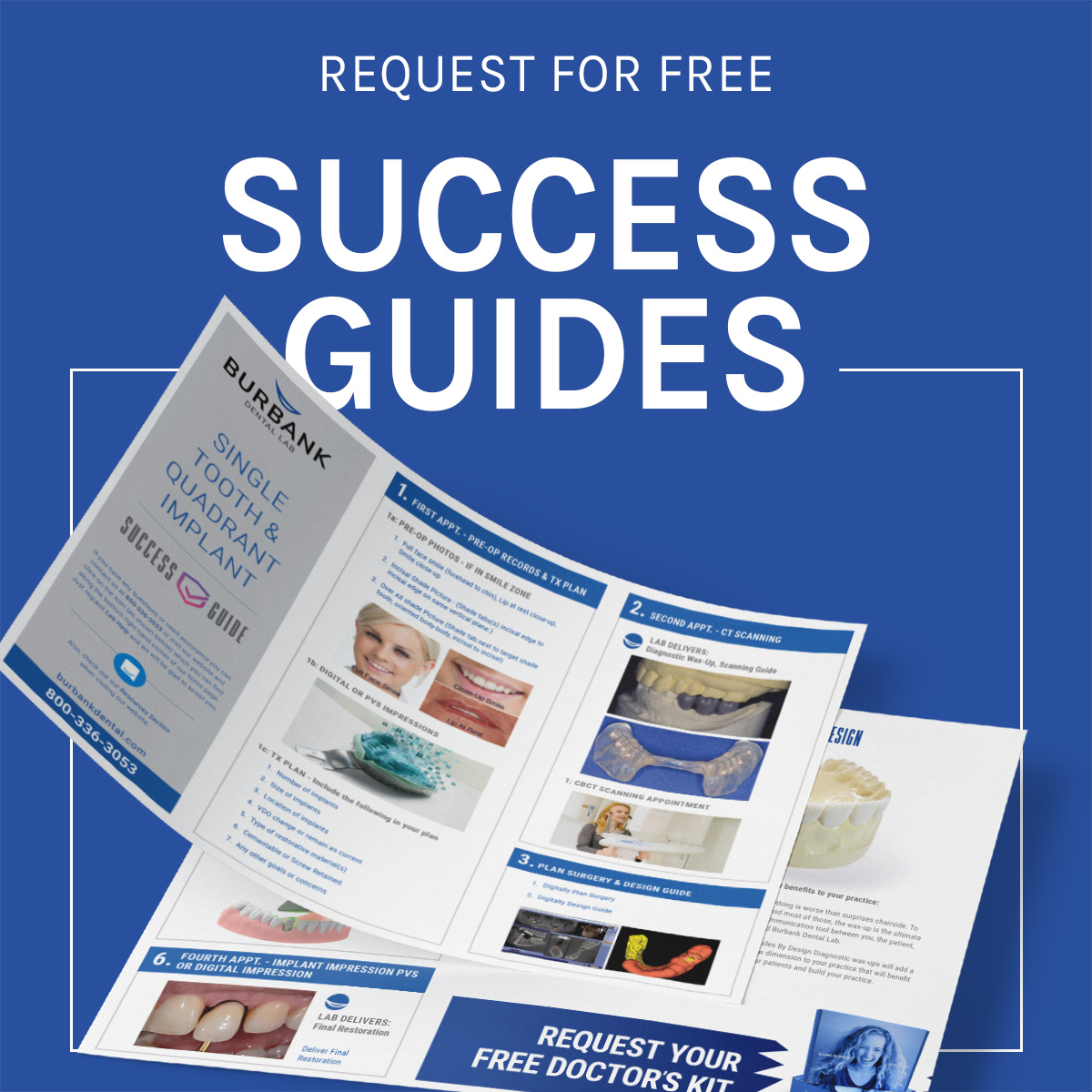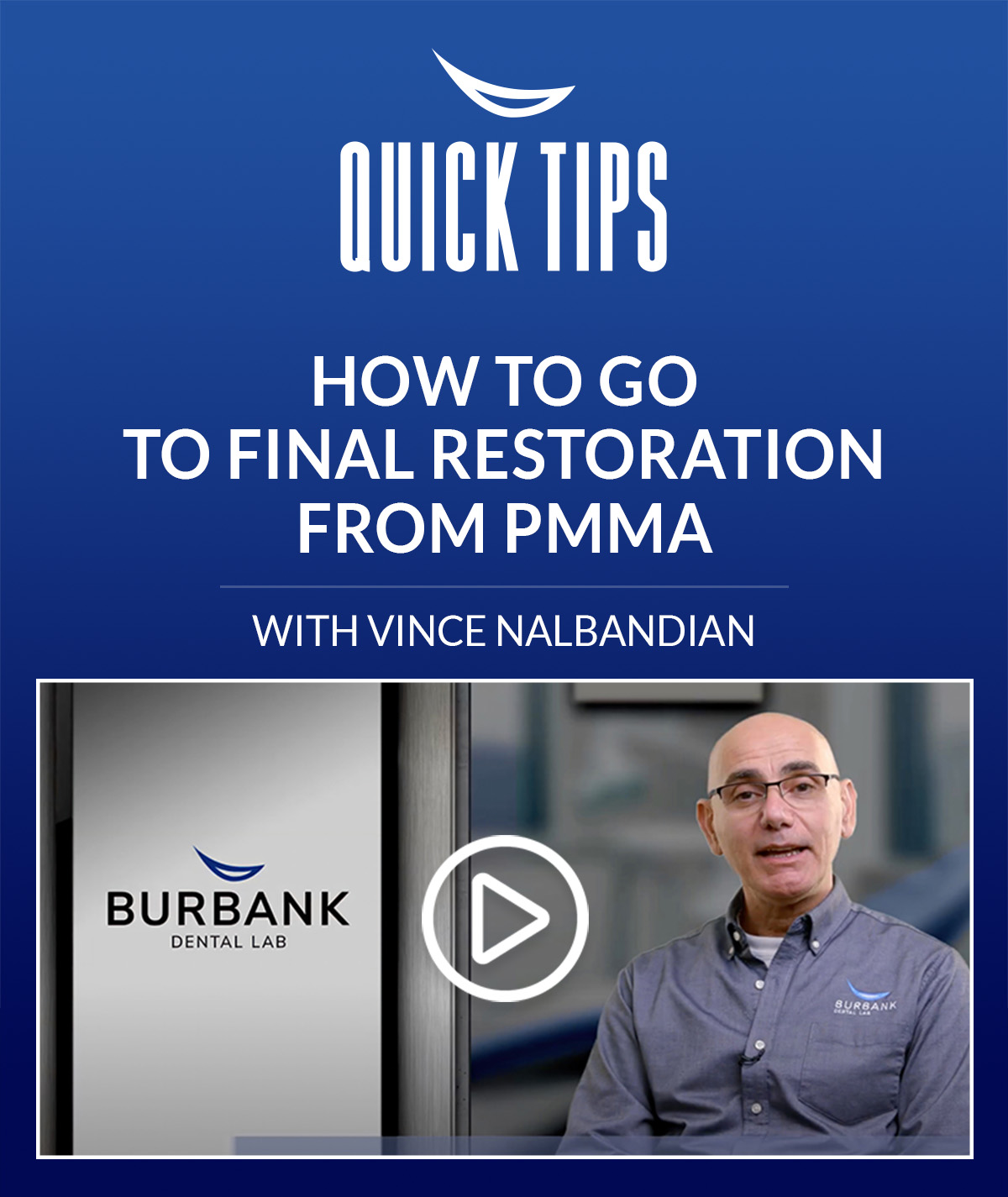A full mouth reconstruction poses a significant challenge in dentistry, requiring both the clinician and dental lab to collaborate. It is crucial in restoring functional harmony, pulpal health, esthetics, and safeguarding the dentition from additional harm for patients experiencing excessive wear of their dentition.
A complete transformation of the mouth can have a profound impact on an individual’s confidence and well-being. Such complex cases necessitate meticulous preparation and assistance to guarantee favorable outcomes.

REQUEST THE BURBANK DENTAL LAB FEE SCHEDULE
REQUEST FEE SCHEDULE
Full Mouth Reconstruction Challenges
1. Tooth wear

The primary reason for prescribing full mouth rehabilitation is tooth wear, which necessitates this type of treatment. The objective is to restore the teeth to a functional and youthful state. An examination is crucial (as demonstrated in the image above) to determine the underlying causes of the wear.
Possible inclusions:
2. Vertical dimension of occlusion
Full mouth rehabilitation aims to address tooth wear and optimize oral health by addressing proper function, muscle concerns, periodontal health, and temporomandibular joint issues. It aims to restore harmony among these factors, leading to an overall improvement in oral well-being.
Initiating the journey towards restoration can commence following a thorough evaluation. To ensure an effective approach aligning with occlusion principles, it is crucial to ascertain the patient’s vertical dimension of occlusion (VDO).
Individuals who exhibit excessive wear are typically classified into one of the following categories:
Once the patient’s dental health is assessed, a treatment plan is created to determine which teeth to treat, the vertical dimension of occlusion, available space, and condylar position for restorative options.
3. Digital photography
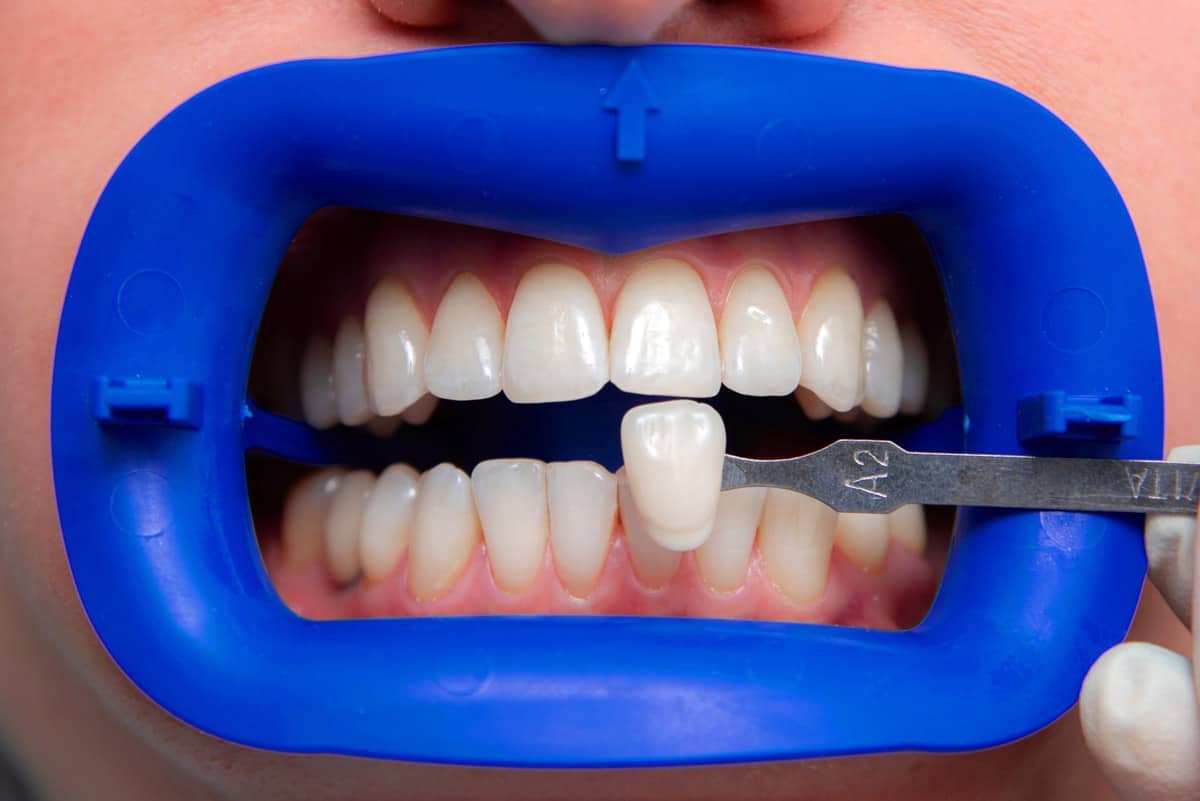
After the diagnosis is made, it is important to work with the dental lab. Involving the lab early on in the process is crucial. The proposed treatment plan can be further refined and strengthened by providing the dental lab with preliminary models and a functional diagnostic wax-up.
To begin the process, you must take the necessary digital photographs.
The suggested photos include:
3. The plan

Before starting the fabrication of the functional wax-up, it is crucial to communicate the proposed plan and manage the patient’s expectations.
To accurately transmit the data necessary for the fabrication of the wax-up, the following must be provided:
4. Functional wax-up
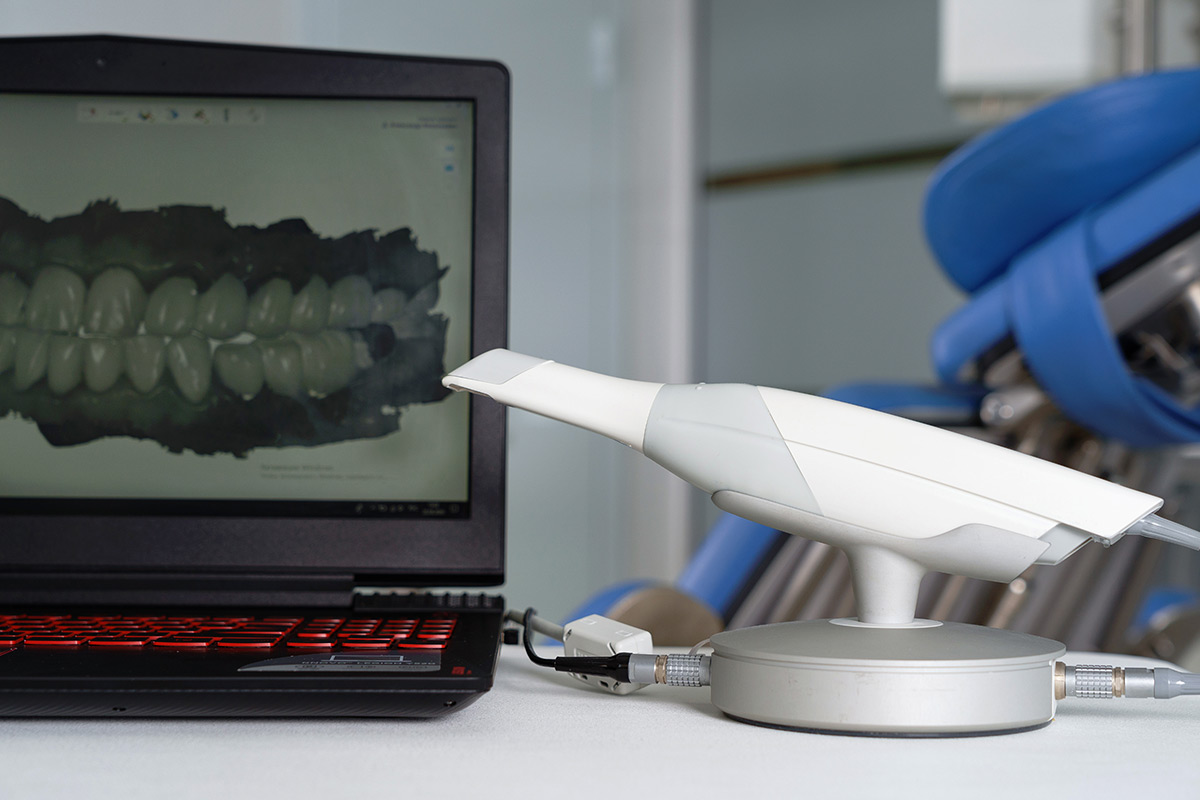
Using this information, a functional wax-up that meets the specified requirements can be created. The wax-up can be made using the traditional chemical impression method or a digital scan.
Once the wax-up is finished, the following is submitted to the patient for approval.
Preparation can begin after the wax-up is approved, and the proper VDO staging strategy should be followed. This is an important step in ensuring the appropriate function of the case. The staging will fall into one of three possible scenarios:
5. Temporaries
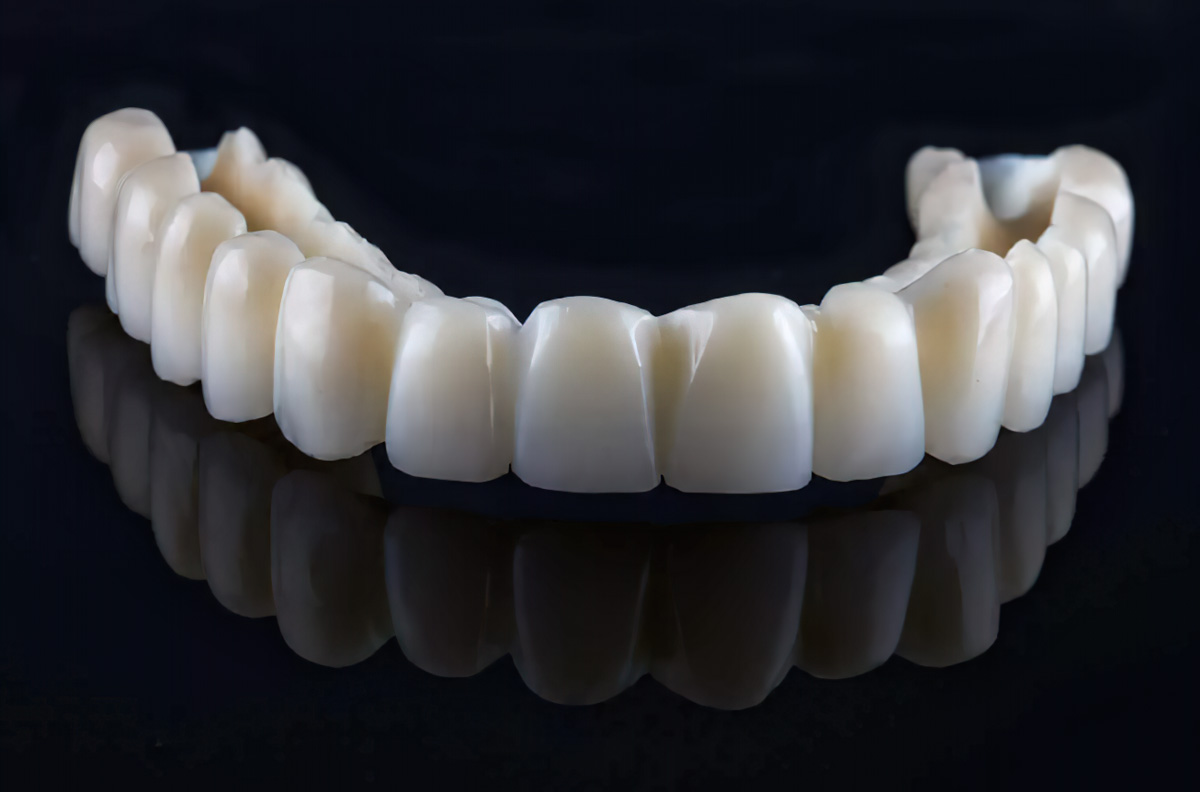
Once the patient wears the temporary dentition, it’s important to gather their feedback to ensure their satisfaction. It’s recommended to take the same pictures as step one to visually compare the temporaries in the mouth.
Additionally, ensure that new impressions are taken while the temporary restorations are in position. In cases where no modifications were made to the occlusion or vertical dimension of occlusion (VDO) on the temporaries, only a single bite recording, from one temporary restoration to another, is required. However, if adjustments were made to the occlusion or VDO, it is necessary to take three bite recordings for each modified provisional restoration in relation to the prepared teeth.

Now that all preplanning information has been gathered, Burbank Dental Lab can start fabricating the final restorations using the most suitable material for each individual case.
It is possible to do a bisque try-in of the restorations as an added step before the final glaze.
This is not always a necessary step, but it is available.
Once everything is finalized, the case is glazed and sent in for insertion (see above image).
Restoring patients’ oral health by addressing wear-related problems is a crucial aspect of dentistry. Despite the complexities involved, there are methods to guarantee consistent and anticipated outcomes.
Over the years, Burbank Dental Lab has successfully restored numerous cases involving full-mouth rehabilitation and complex dental procedures, and they are enthusiastic about assisting you throughout the entire process.

